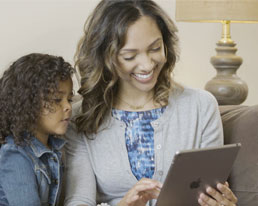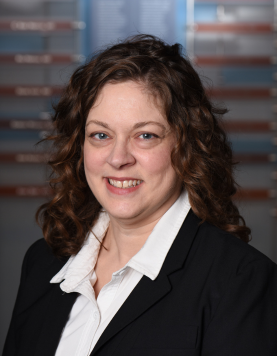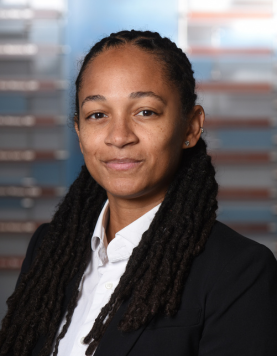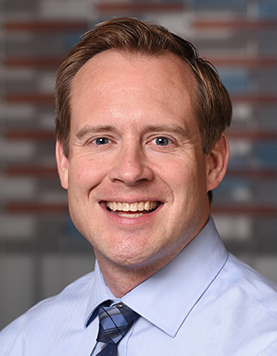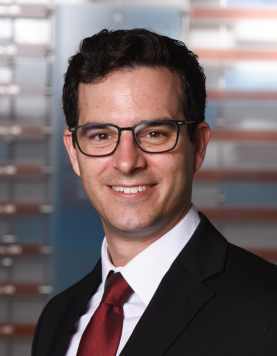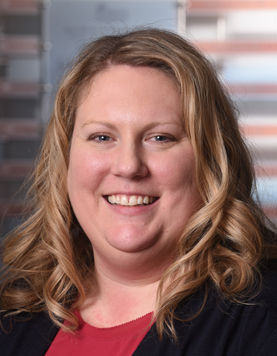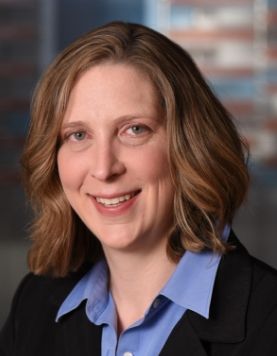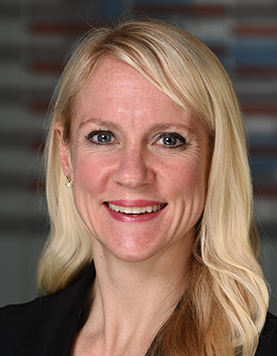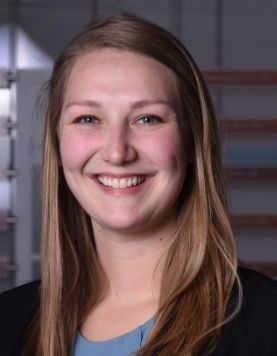ACL program at Dayton Children's
More than 400,000 ACL injuries occur every year in the United States. And according to the American Academy of Pediatrics, ACL tears have increased by 147.8% over the past 10 years, or 2.3% annually due to skeletal immaturity, lack of knee strength and injury prevention programs. Adolescents, females and athletes in pivoting/cutting sports, like soccer or basketball, tend to have more ACL injuries than their peers.
There are many physicians and facilities that can repair an ACL tear, but only Dayton Children's orthopedics and sports medicine division offers cutting-edge, comprehensive care from prevention to diagnosis and treatment for children and teens in the Dayton region.
what is the ACL?
The anterior cruciate ligament (ACL) is a thick band of tissue that is made up of lots of fibers, like a rope. It is one of four ligaments that connect the upper leg bone (femur) to the lower leg bone (tibia). It is one of the major stabilizers of the knee.
what are the signs and symptoms of an ACL injury?
There are several signs of an ACL injury, including:
- Patients may feel a sudden “pop” with pain deep in the knee.
- Significant swelling in the knee that develops within a few hours of injury.
- Limited knee motion due to pain and swelling.
- Knee may feel unstable, buckle or “give out.”
It is common for pain to resolve within a week or two. This does not mean the ACL is healed.
how is an ACL injury diagnosed?
Your provider will check the knee for stability, movement and tenderness. They will compare the injured knee to the uninjured knee. X-rays will be done to look for damage to the knee bones. More testing may be done if your child’s provider thinks they have an ACL tear or other damage to cartilage, the meniscus or ligaments. One of these tests may be an MRI. An MRI shows damage to ligaments, tendons, muscles and cartilage. Other injuries may be found if a scope, an arthroscopic camera, is placed in the knee during surgery.
how do you treat an ACL injury?
When the ACL is torn it does not heal on its own, and the knee becomes unstable. Without the ACL controlling knee movement, the knee bones are more likely to rub against each other with activity. This leads to injuries of the tissue that covers the ends of the bones (cartilage) and can trap and tear the pads that cushion the knee joint (meniscus). The orthopedic provider will do imaging tests to see the injury. These tests can include X-rays and/or a CT scan or MRI. The radiologist and orthopedic surgeon will carefully review the images from the tests to determine the extent of the injury. Then, the surgeon will discuss with you and your child the best treatment option based on age, lifestyle and future goals. This could include surgery. If the ACL is partially torn, sometimes it can be repaired or rehabilitated without the need for surgery. However, 90 percent of ACL injuries usually go on to need replacement or reconstruction, followed by physical therapy and bracing.
how do you manage pain due to an ACL injury?
One of the major causes of pain following a knee injury is the fluid and blood within the knee joint. The knee often appears swollen with limited motion and weight bearing is either painful or impossible. Crutches may be used temporarily in addition to a brace to keep the leg from moving (immobilization) to help stabilize the knee and reduce pain. Swelling responds well to the acronym RICE:
- Rest
- Ice
- Compression
- Elevate
We also encourage anti-inflammatories (naproxen, ibuprofen) in the initial injury phase to help reduce inflammation. Hydrocodone, a narcotic, may also be prescribed by your provider for breakthrough pain. But in many cases, we wait to prescribe it until after surgery. Your doctor will discuss how often you should use your knee immobilizer and crutches based on other injuries you may have.
what is prehabilitation?
Before surgery, we will work with your child in prehabilitation (pre-surgery rehab) to return their knee back to the size and strength they had before their injury. Research shows that this helps better prepare the knee for surgery. A few visits with our physical therapists are also very important to help reduce pain. The main goals of prehab are preparing the knee for surgery by reducing joint effusion, regaining knee motion and working on the muscles in the upper thigh (quadriceps). Meeting these goals is important for the best timing of surgery.
what is ACL reconstruction surgery?
The ACL is the most commonly injured ligament in athletes with more than 150,000 ACL surgeries performed annually in the United States. There are a few ways to perform reconstruction of a torn ACL. Our experienced orthopedic surgeons take a personalized approach to each case and work together to stay current with the best techniques and practices.
The main goal of ACL reconstruction is to recreate a safe, stable knee by placing a “new” ACL in position for your body. The “new” ACL, or graft, may be taken from the patient (autograft), or it may be a prepared cadaveric tendon (allograft). Allografts are not a preferred choice for athletes who participate in contact sports. Your surgeon will carefully evaluate your child’s knee and will take into account their age, whether they are finished growing, their level of sports participation and their future athletic goals to recommend the best graft. We perform many types of ACL surgeries for young children:
- For patients 10 and younger: Physeal-sparing surgery
- For females 10-12 years old and males 13 and younger: Ephyseal approach
- For patients who are finished or nearly finished growing: Adult type ACL reconstruction.
These include:- Bone-Tendon-Bone
- Hamstring tendon
- Quadriceps tendon
- Allograft
In some cases, other injuries may also need to be repaired, such as meniscal tears or cartilage damage. Your surgeon will discuss the repair of these injuries and their possible impact on rehabilitation.
what is the BEAR Implant for ACL reconstruction surgery?
The BEAR Implant may be an option for some ACL patients. The BEAR Implant is the first medical advancement to enable your body to heal its own torn ACL. The implant works with your own blood to heal the torn ends of your ACL back together. Learn more here.
when can I return to sports after an ACL injury?
The return to sports timeframe for ACL reconstruction is different for each patient and is based on several factors. These factors include:
- The type of surgery
- What sport(s) the athlete is involved in
- Progress with rehabilitation
- Knee stability
- Objective testing
The minimum return to play (supported by numerous research articles) is nine months. Many researchers recommend a 12-24 month wait before returning to play. We take a comprehensive team approach to allow patients to return to sports. Physical therapists, your surgeon, parents and coaches will all be involved in assuring the safest return to sports. Nationally, the average rate of re-injury after ACL reconstruction is 30 percent. This is why taking time to heal properly is so important.
what is the ACL bridge program and prevention training program?
As part of your child’s recovery, they will likely go through the Sportsmetrics™ training program run by our athletic trainers and physical therapists. Sportsmetrics is a scientifically proven, six-week jump training program that incorporates proper stretching, special plyometric exercises and weight training. It focuses on developing overall leg strength as well as improving balance in strength from the front to the back of the thigh.
Athletes do 12 to 18 one-hour sessions challenging their bodies to execute jumps, cone and footwork drills and core strengthening all while gaining positive feedback from an athletic trainer. Student-to-teacher ratios are kept to 6 to 1 or better to make sure each athlete receives personalized recommendations and attention. Through specialized progression of jump/plyometric drills, athletes learn proper techniques for jumping and landing; increase overall leg strength and improve symmetry in right-to-left leg power. Each session builds on the previous one, developing technique and enhancing performance.
Neuromuscular training not only increases muscular power and jump height, but also decreases stress and impact at the knee. The strength and flexibility components have been carefully reviewed for safety and effectiveness. Our ACL Bridge Sportsmetrics program is specifically designed for athletes returning to play after ACL reconstruction.
our orthopedic surgeons
Our U.S. News and World Report-ranked orthopedics team is specially trained to treat kids and teens with a focus on preserving growth and getting your child back to school or their sport as quickly and safely as possible. Surgeons that perform ACL reconstruction at Dayton Children's, include:








